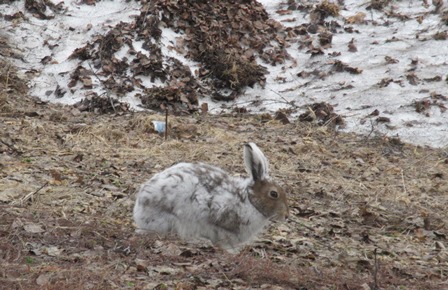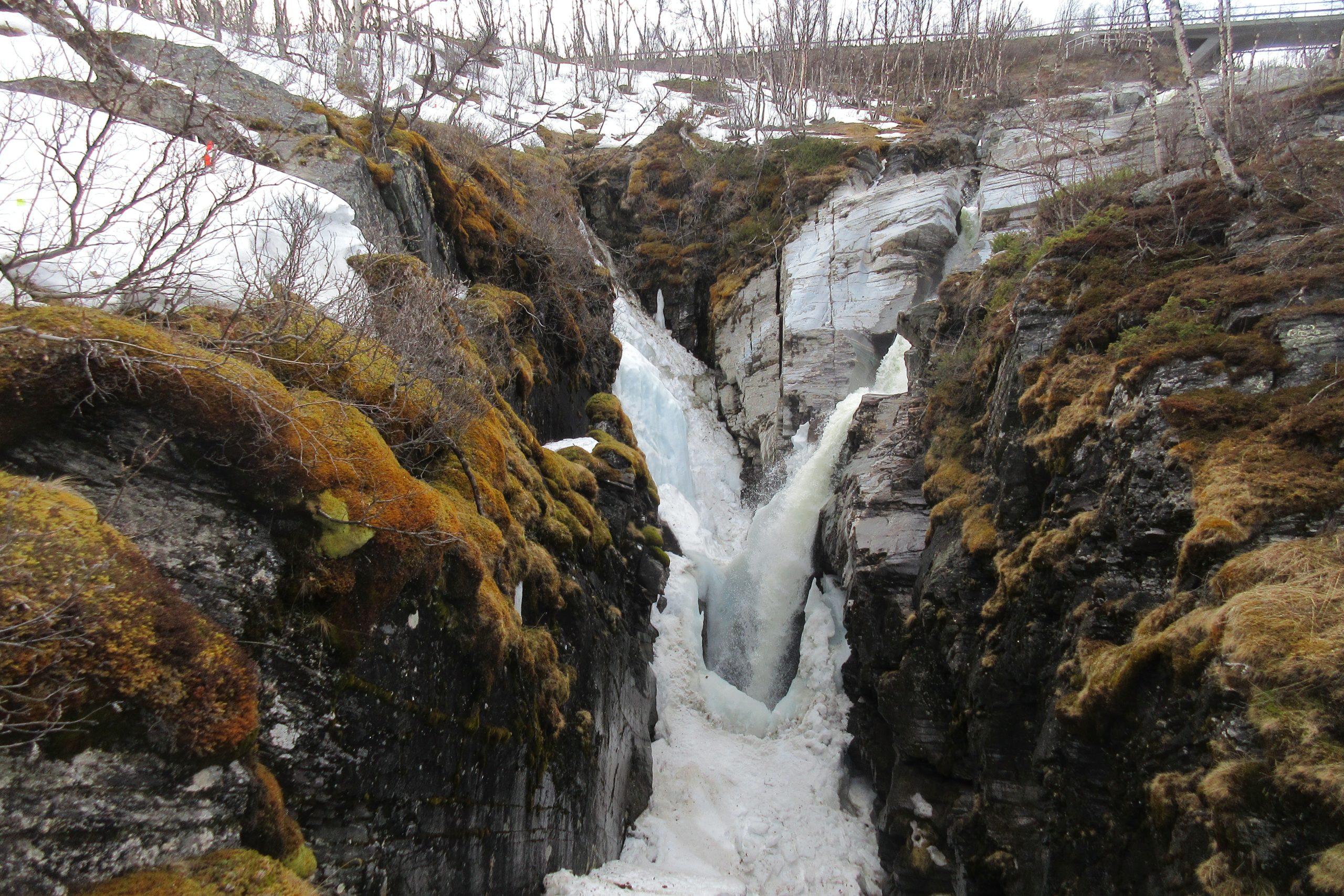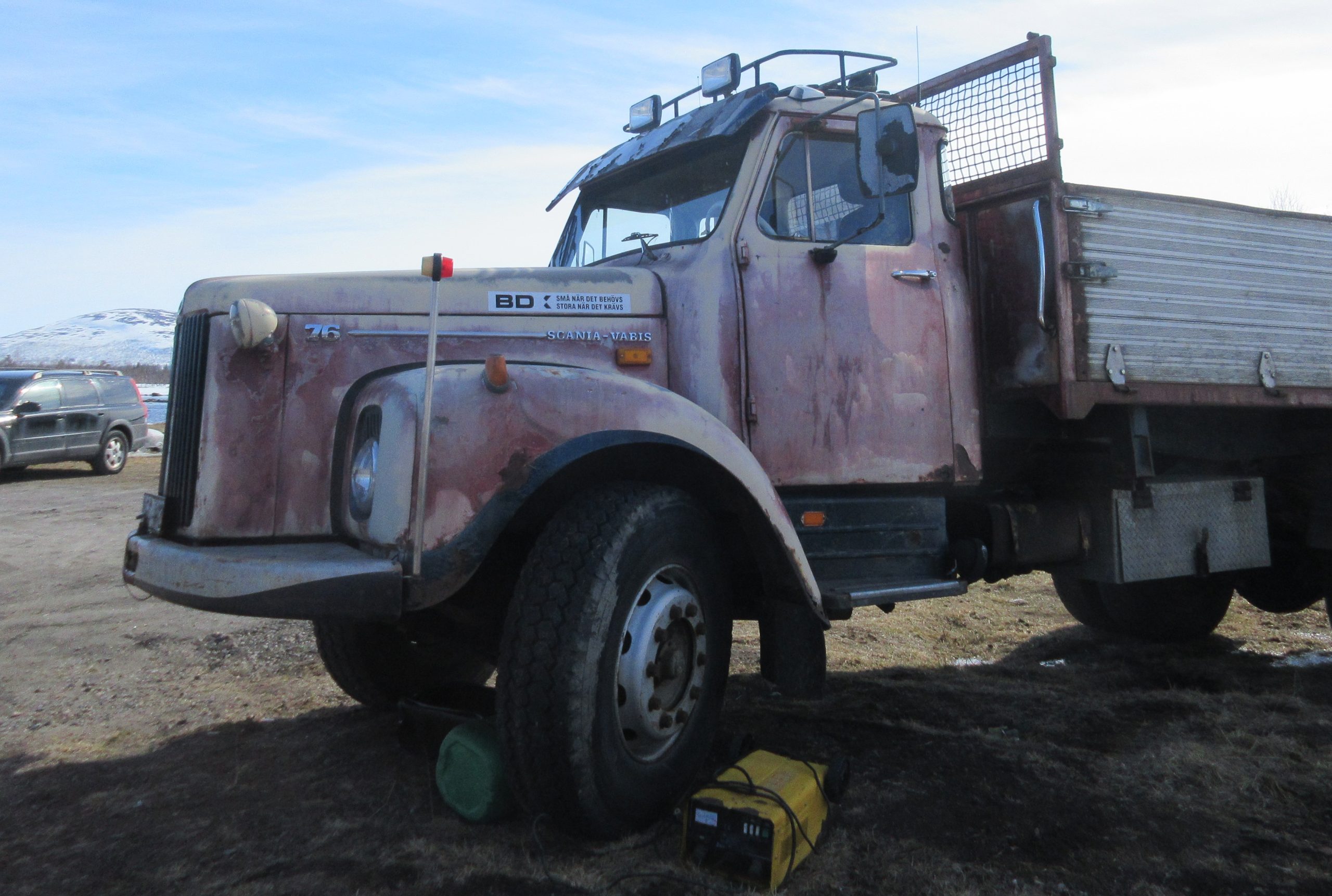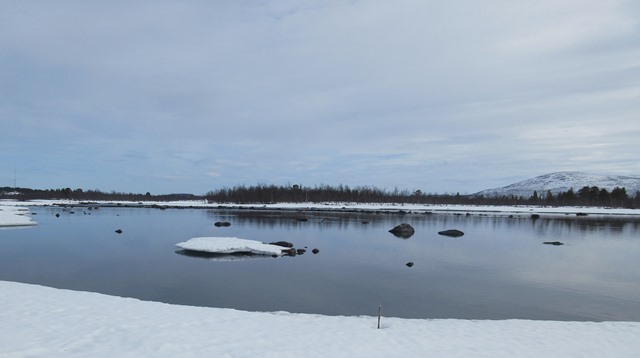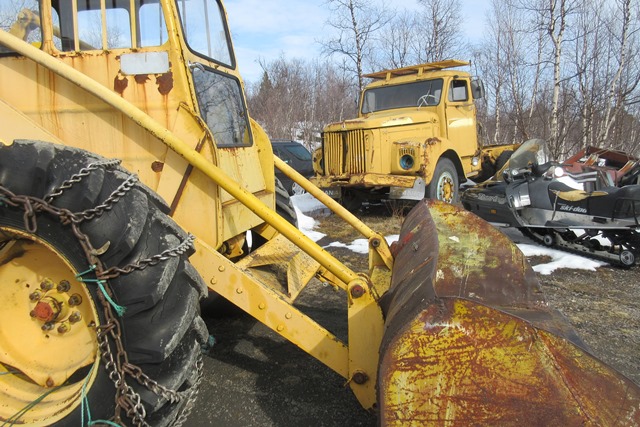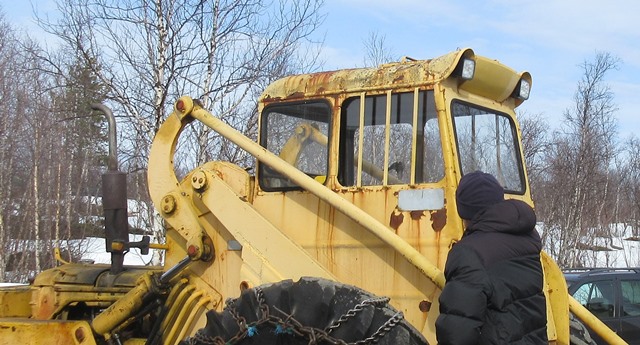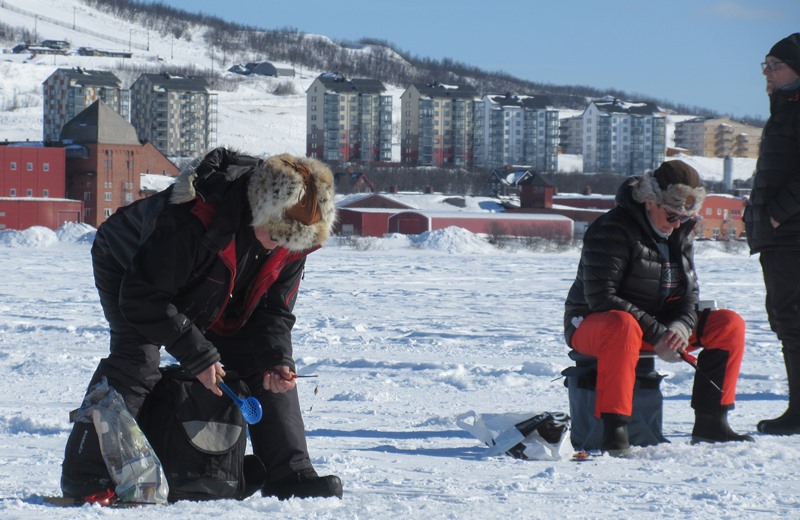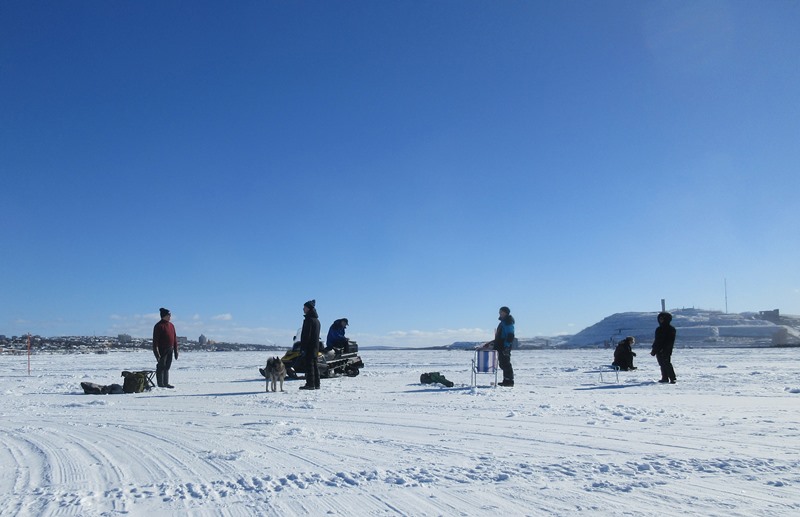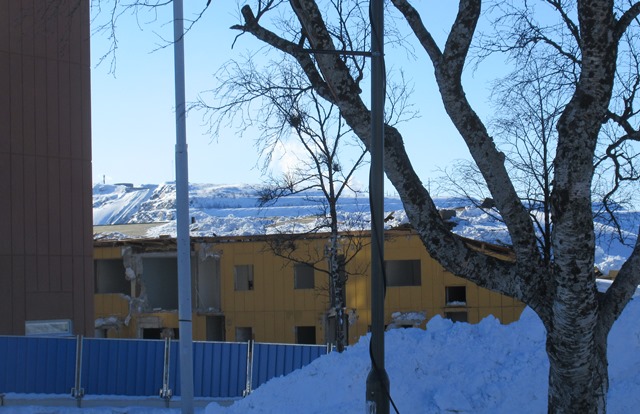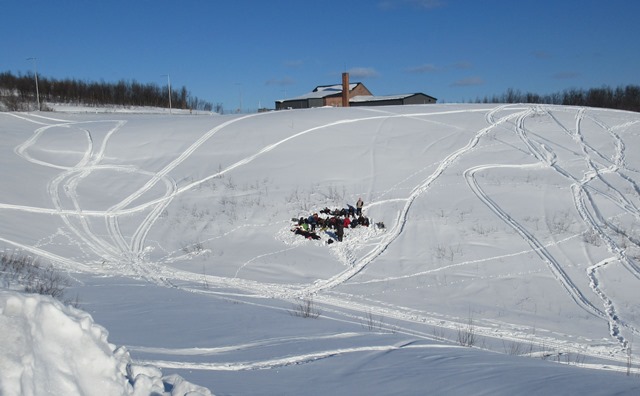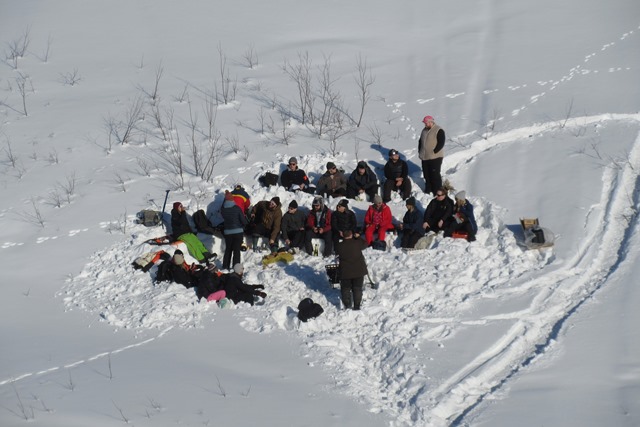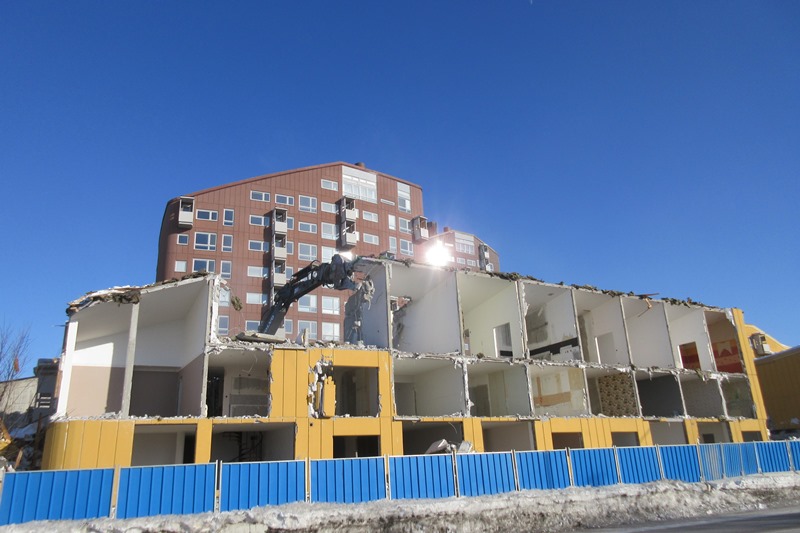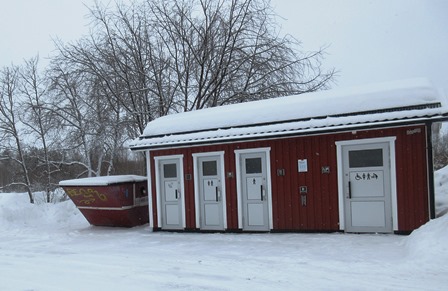Part One: Not what you’d expect
It’s the beginning of July and, hearing the distant siren song of the mosquito, we decide to return to Kiruna from some weeks in the warmer south.
Picture us in the taxi from the airport – summer has arrived in a huge rush and Kiruna is awash with greenery and wildflowers, quite unlike when we saw it last. We’re glad to be back, and even more glad that arriving at this time of year means there are no difficulties to overcome before we can settle – no snow clearing or sitting shivering in the house waiting for it to warm up. We can just waltz in and feel right at home.
As the taxi turns into our street our happy faces display a slight hesitation in their expression of joy. Are those roadworks at the end of the street? There’s a large warning sign outside our house, and several piles of earth. Yellow and red fences cross the street at an angle to our driveway.

Left standing in the road with our suitcases, looking at the piles and fences, we can see our driveway is blocked. Next to the earth pile is a deep hole. Though quite far from any threatened ground in town, our house appears to be teetering on the edge of a pit. There is no-one around to ask what is going on.
After letting ourselves into the house we guess the turn of events. The organisation responsible for the underground heating supply in Kiruna must be replacing some pipes. There’s a big hole in the ground, they’ve put up a fence so as not to be liable for anyone falling in, and – as usual – they haven’t noticed this is the entrance to our driveway and a sharp turn at the end there requires road space for us to get in and out. This has, in the past, been a problem for us when large snow piles blocked the area. We weren’t expecting the same problem with mud.
Exhausted that even in mid-summer we can’t arrive at the house without having to deal with some kind of mini-crisis, Rolf calls ‘Tekniska Verken’. Hole, what hole? Are you sure it’s us? They suggest calling someone else. This call is successful, because a man managing pipe replacement work agrees that someone will come out to look at the situation. Kiruna can be impressive like that.
An hour later a monster machine trundles up the road and Kiruna Man climbs down to our level, leaving the engine running. Rolf explains the problems. Sharp intake of breath – he can’t see a way to rearrange the fencing because the fences won’t reach round if we reposition them to go a longer stretch. ‘Well get some more fences then’ I suggest. There is no response.
Rolf, ever the patient one, is taking it fence by fence. ‘What about if we just slightly adjust this one, like so. How would that be? And then perhaps…. Move this one a tiny tiny bit like so?’
There are still a lot of intakes of breath and the young man shakes his head. It turns out he’s new to the job, and actually works for a company that is sub-contracted to the sub-contractor who works for ‘Tekniska Verken’. So they aren’t his company’s fences, and he can’t get any more of them. And he doesn’t want to be responsible for a decision to move the fences that might impact on his company’s liability for someone falling in the hole.
We are all three of us standing in the road looking at the fences, with monster machine huffing and puffing next to us, when a rather glamorous woman in black arrives on an electric scooter. She has a small dog in her handbag. She immediately falls into conversation with the young man. She looks like she had been expecting to drive her scooter beyond the barrier and is questioning why the path is blocked, only the conversation continues with a level of detail about the problem that begins to make us feel we have a very bossy neighbour here. Isn’t this more our problem than hers?
We’re not sure whether to be peeved or pleased that someone is taking up the issue that is really ours to fight, when she points at the pile of earth and tells the young man to push it back further to the side of the road. The young man walks back to the monster machine and climbs up in, clearly intending to do the job.
‘Do you live round here?’ we ask, amazed by her powers of persuasion. ‘Yes,’ she replies. ‘I work for the company that supplies the machine’.
So – she is the manager of the young man, who works for the company, that is sub-contracted to the company, that is sub-contracted to ‘Tekniska Verken’ to mend the pipe. It’s as simple as that. And when she waves her pink-painted fingernails, it will be done.
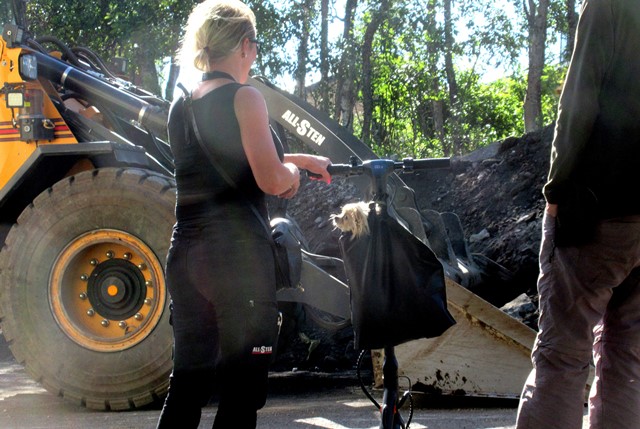
While she reaches into her bag to lift her dog down to the street the monster machine reers up behind her and roars towards the pile of earth. She has no need to look because she knows everything will be done according to her instructions, as indeed it is. Meanwhile she chats pleasantly to Rolf. She lives in the flat in the street opposite and was sitting in her living room when she saw the machine driving up here, so came to see what was going on.
It takes only minutes for the earth to be moved, the fences repositioned, and the route to our driveway reinstated. Soon the man, the machine, and the lady on the scooter with a dog in her handbag have all disappeared, leaving us standing alone in the road again. But now we are laughing.
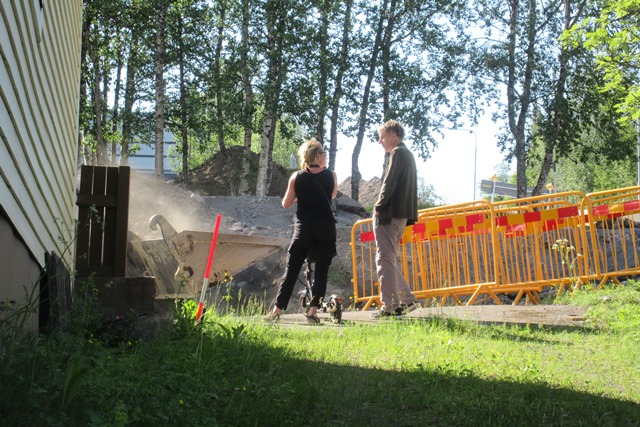
Part two: Good Vibrations
There have been swirls of vapour wafting over the road – the hole in the ground has taken on the characteristics of a hot spring. The reason for the hole is a leak in an underground pipe delivering hot water to the neighbourhood, and that water is a toasty 90 degrees.
Our house isn’t equipped to receive water heating so we don’t get the benefit, but our neighbours do. A leaking pipe is detected very quickly so they probably wouldn’t have experienced much reduction in pressure, which is good, because there’s been no work done on it for a week.
Yesterday, returning from a short outing out of town, we followed a vehicle trailing long pipes, and guessed they were coming to our street.
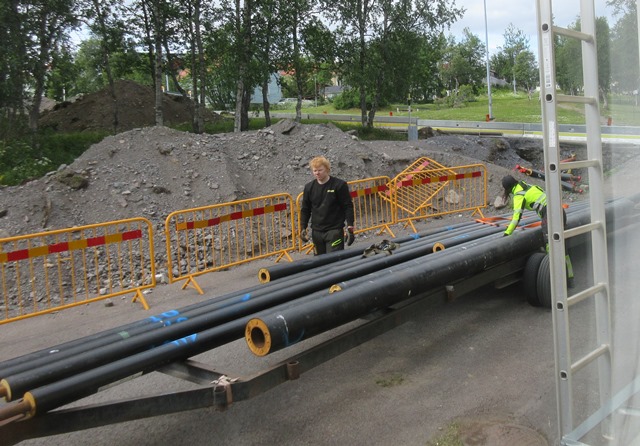
When we had all arrived at the hole there was a bit more negotiation about road blocking to be done, as before.
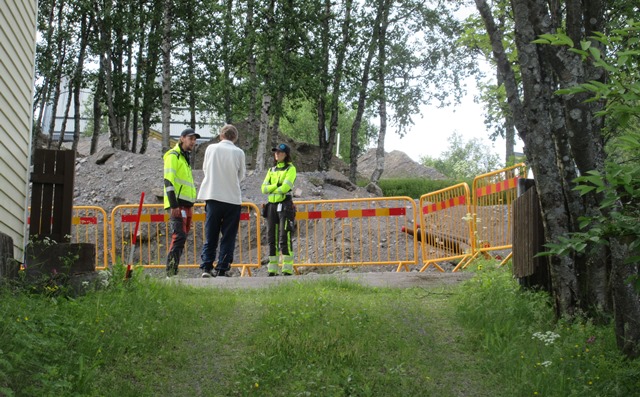
Then the people we had all been waiting for arrived – the welders. They were welding until 10pm, and we guess that during that time the hot water supply was shut off, so there was lots of pressure on them to get it fixed. We assume they did, though the hole looks the same – only now it no longer looks like a hot spring.
Pipe replacement is about to be very big business in Kiruna. ‘Tekniska Verken’ are responsible and they tell us that we should be very happy about this. Not expecting to feel happy about underground pipes, we read on.
The thing is, they tell us, the pipes are rather old. Yes? And with all the seismic events going on in town – collapsing ground as a result of the mining – the ground is shaking and vibrating, and the pipes are more likely to be damaged. Yes? Well, the mining company (LKAB) has agreed to replace all the pipes, and hasn’t asked for proof that pipe damage is a direct result of mining and ground shaking in town. Aha. LKAB is paying ‘Tekniska Verken’ to replace all the damaged pipes, and some of them were old already so they might have needed replacing anyway. But now, ‘Tekniska Verken’ won’t have to pay. So, aren’t we lucky?
It’s hard to understand why we should be happy about this, but inside the Kiruna bubble nothing is quite what you’d expect. All sorts of unusual goings-on can be seen as perfectly normal. Demolishing a whole town, for instance, so a company can carry on its business. Destroying people’s homes, and ignoring the protection status of historic buildings. The ground shaking so much on a regular basis that our houses and pipes all move and crack. All this is thought perfectly normal. So when LKAB offers to pay to repair the damage to pipes, in the Kiruna bubble we are happy.
‘Tekniska Verken’ is truly inside the Kiruna bubble. They must think we all like to be shaken and jolted by regular seismic events. On their Facebook page they tell us that the new Kiruna is ‘vibrating’ with new life.
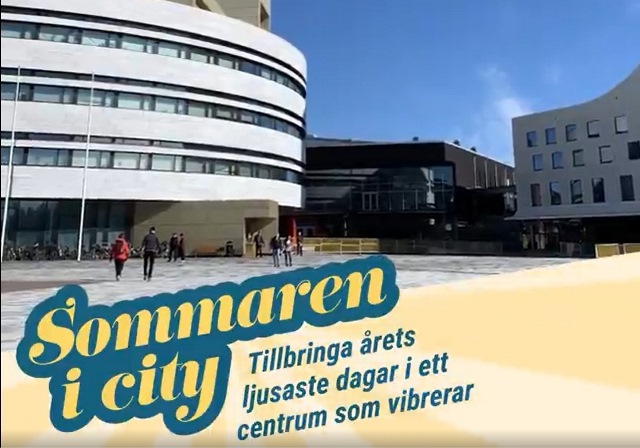
No, more vibrations is not what we want in the new town.



